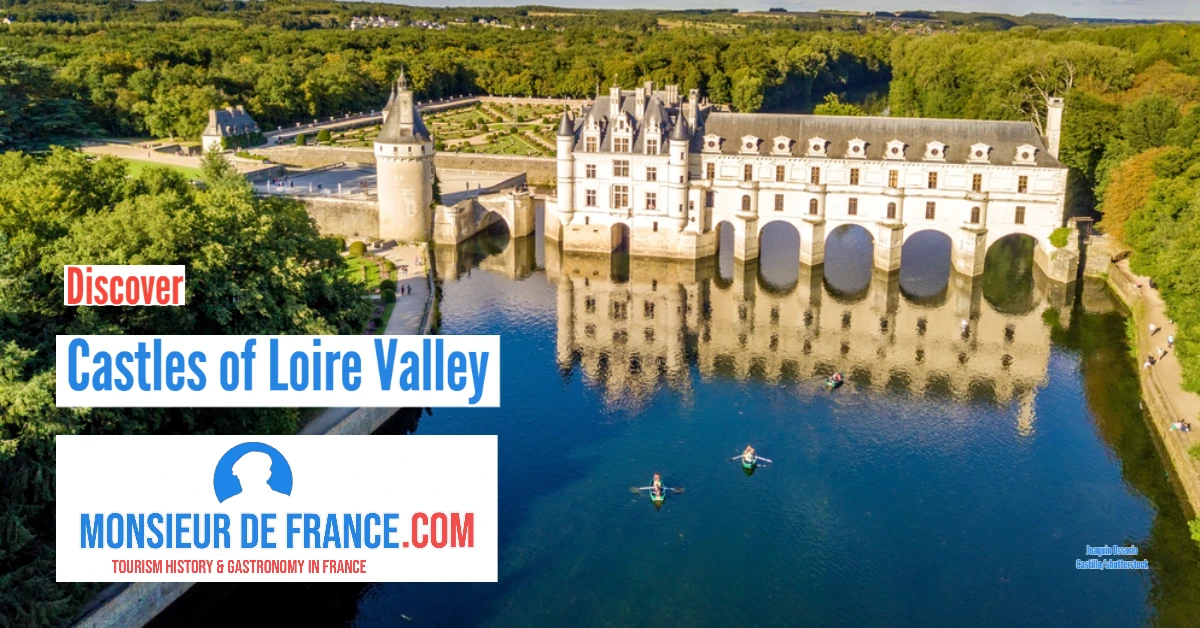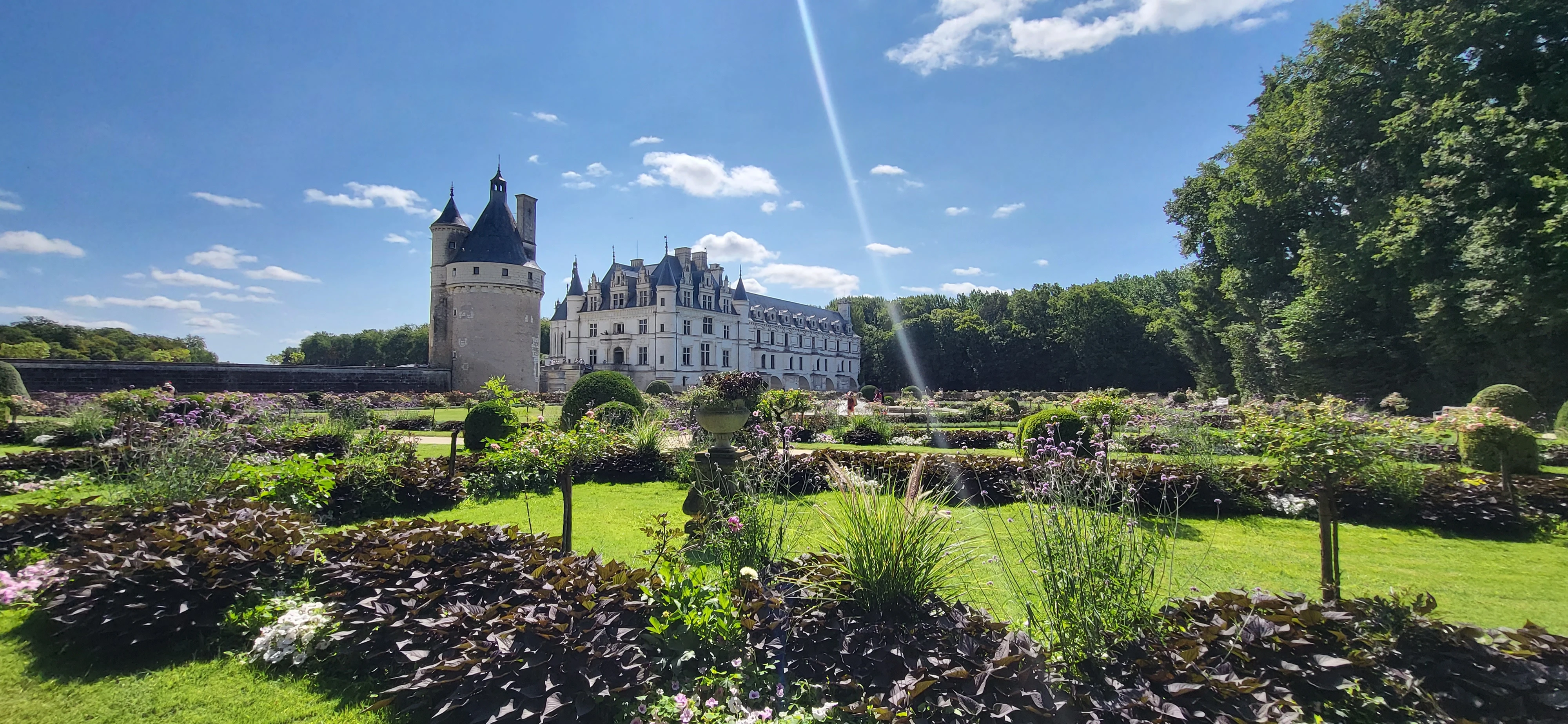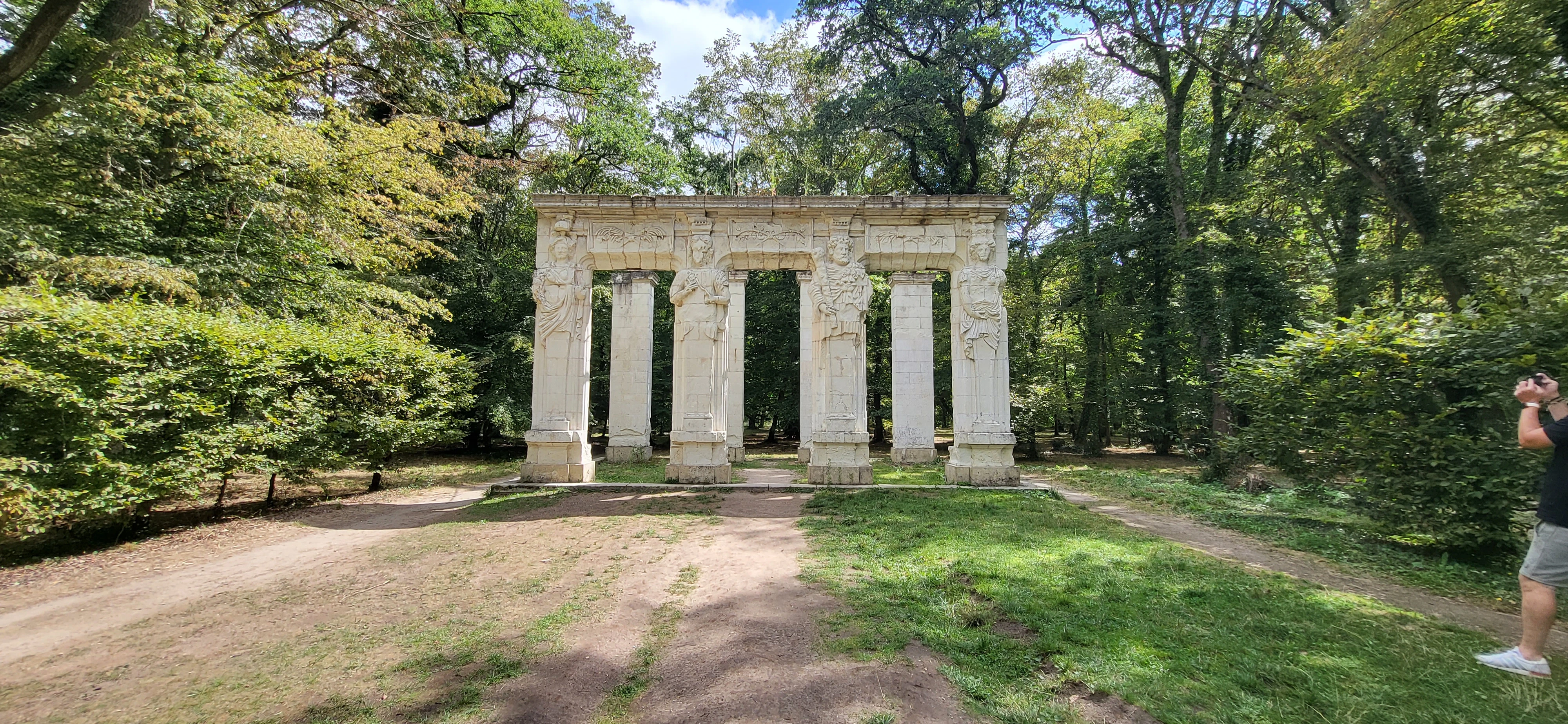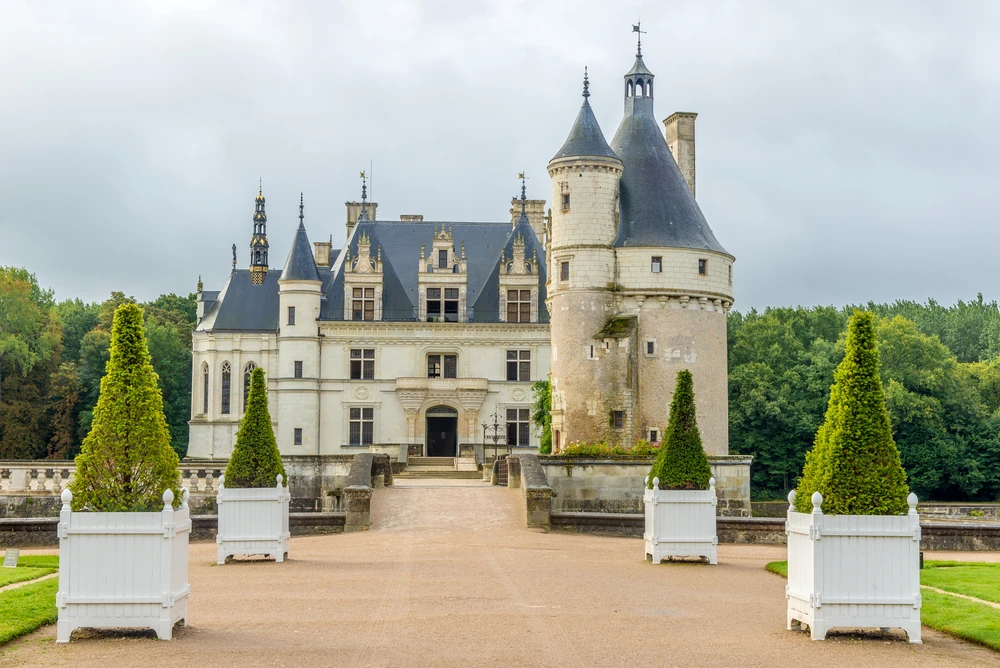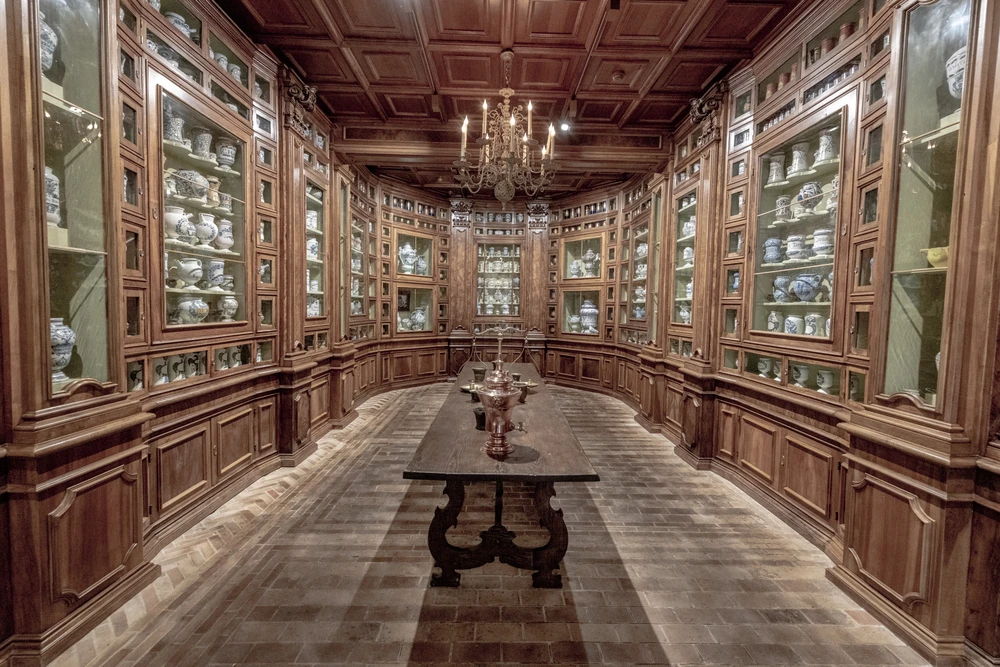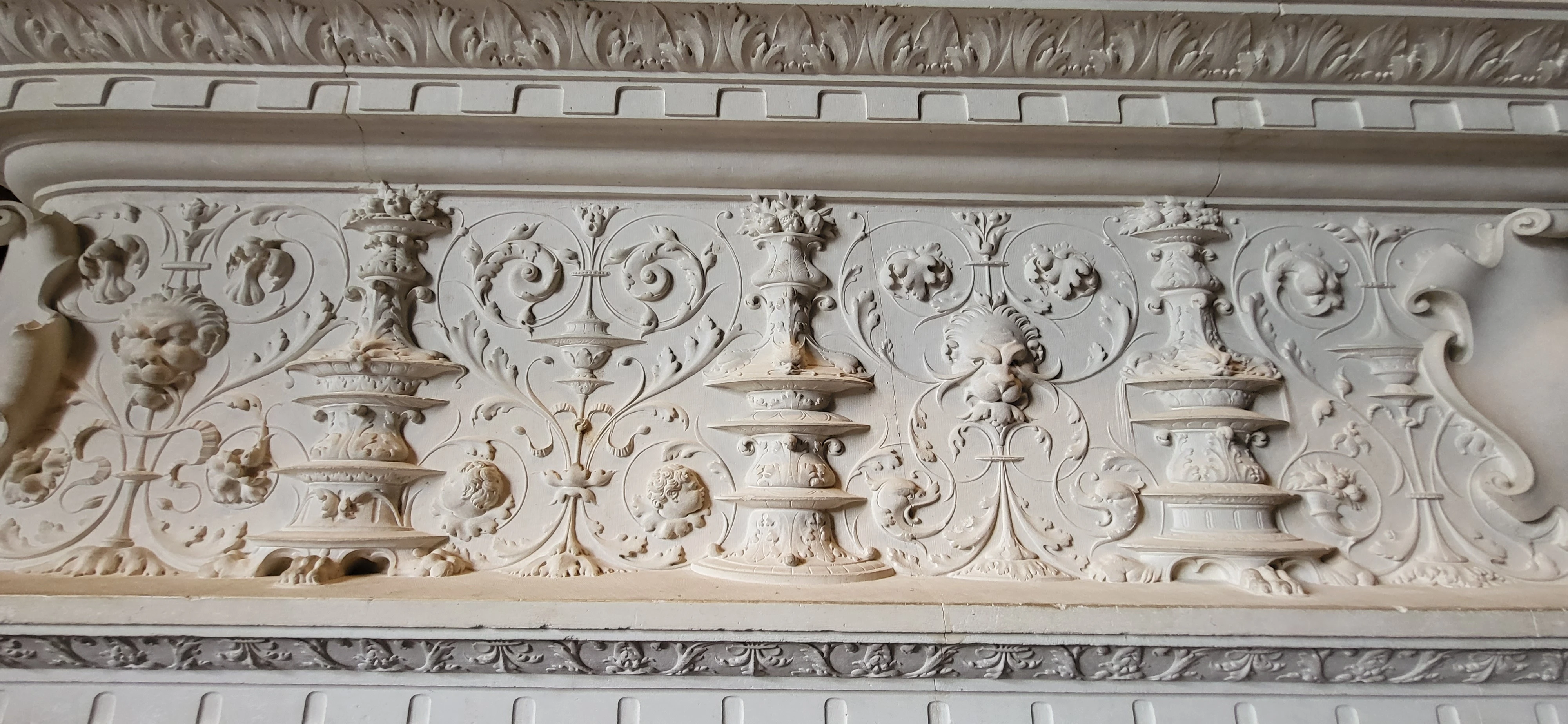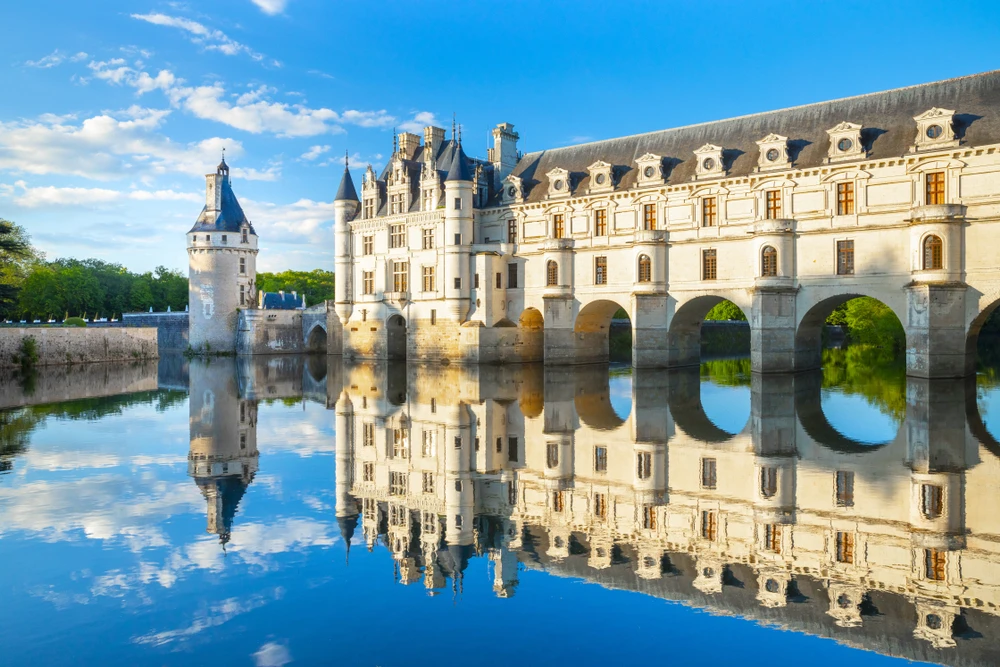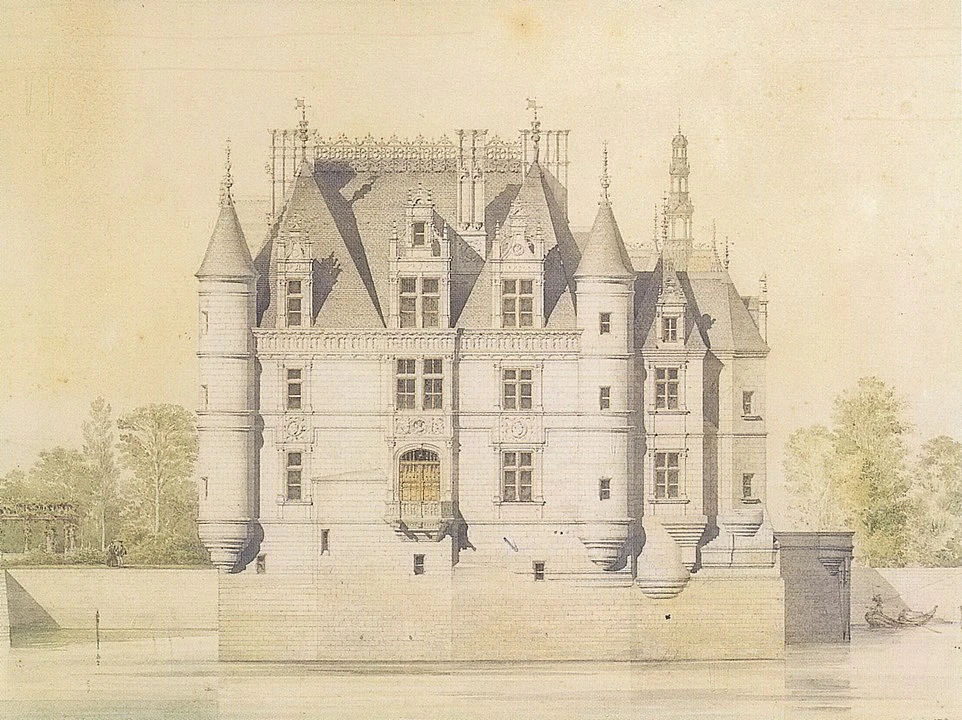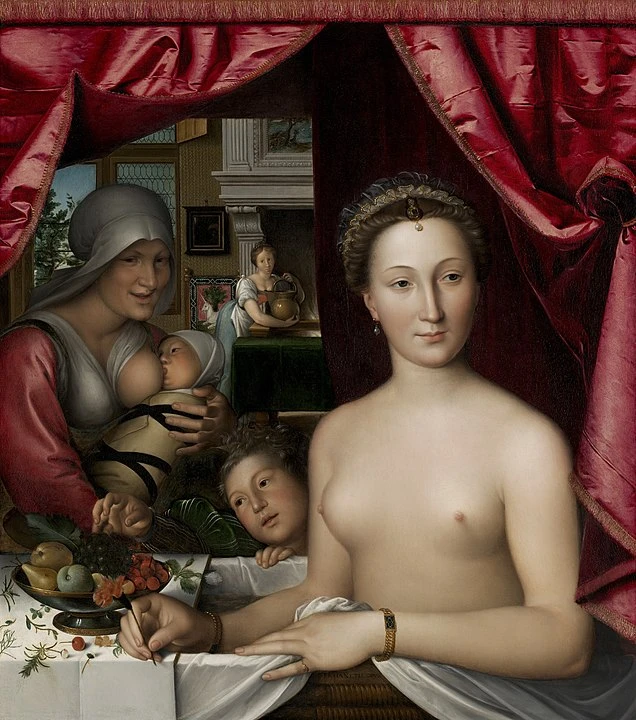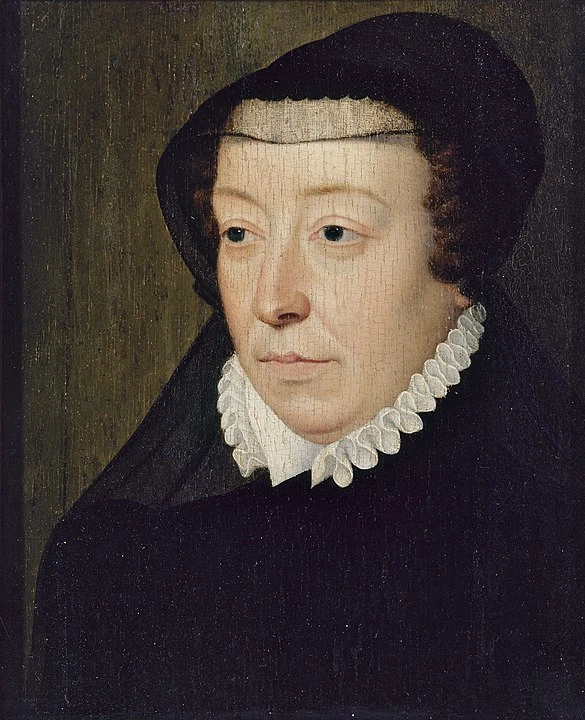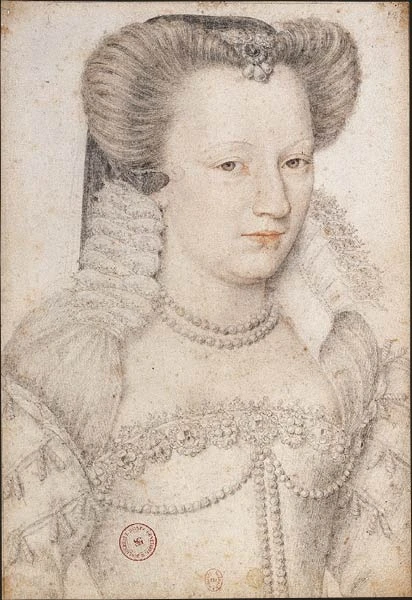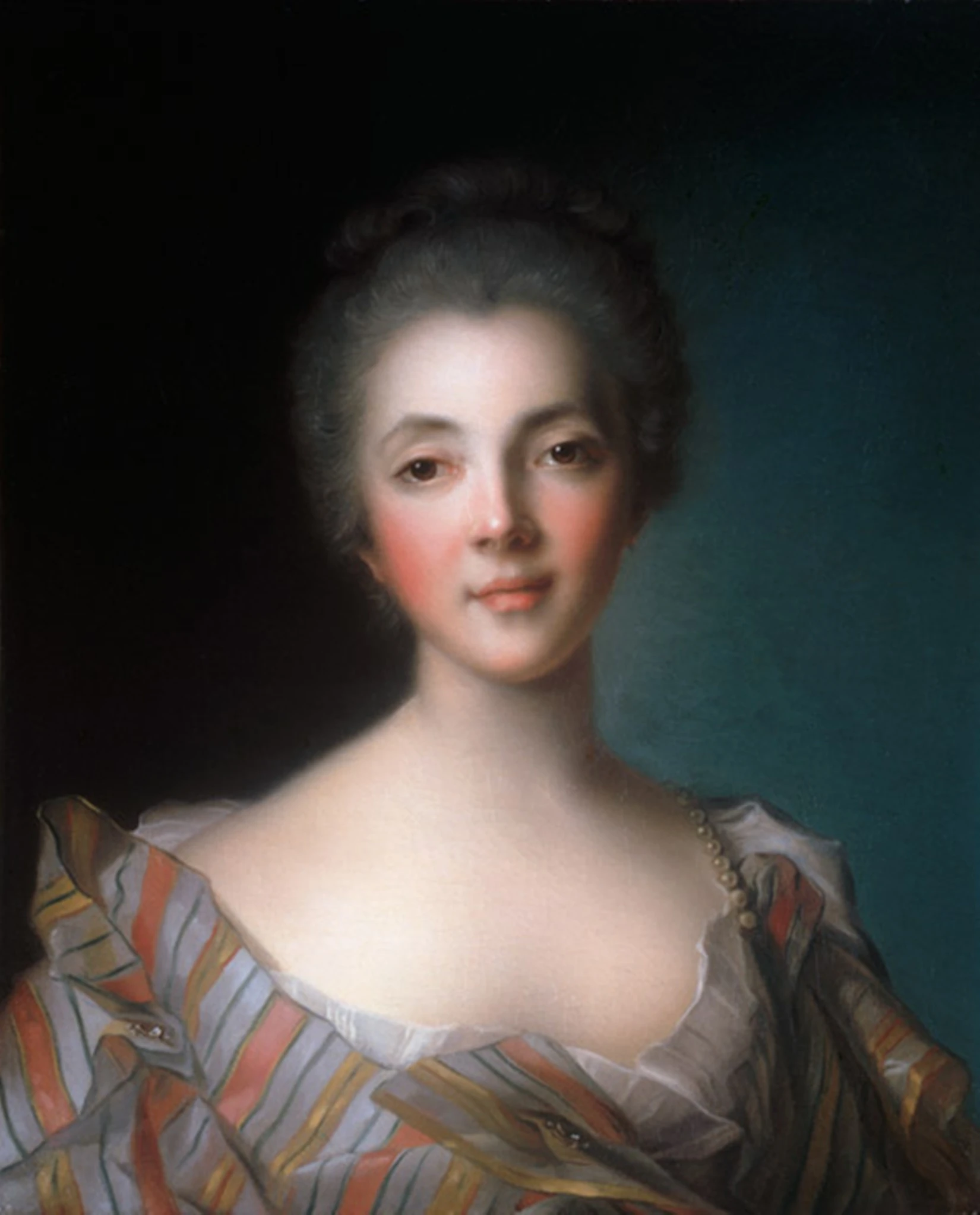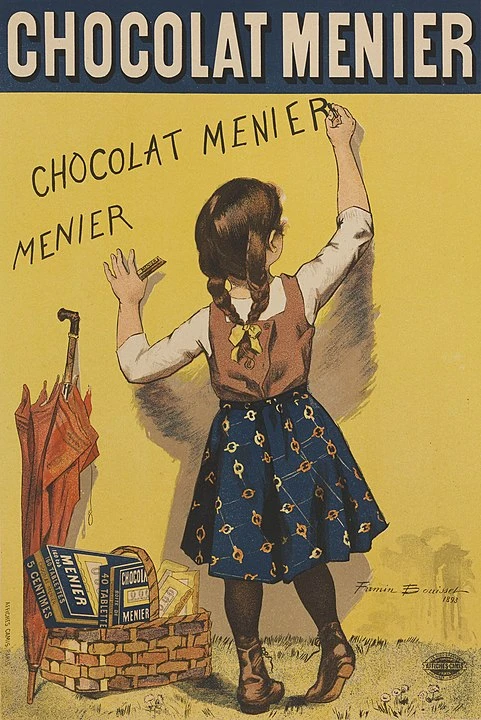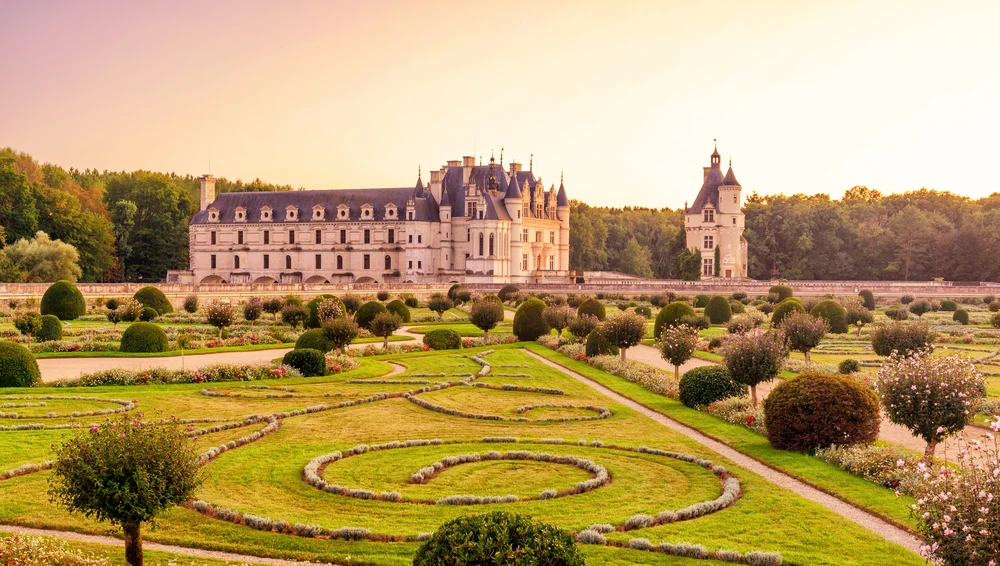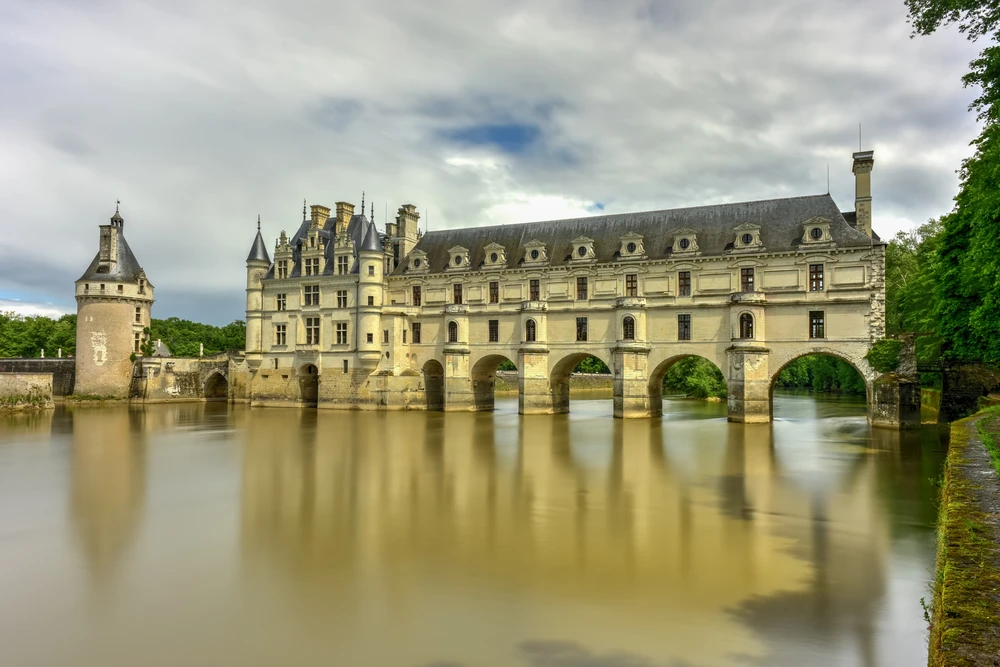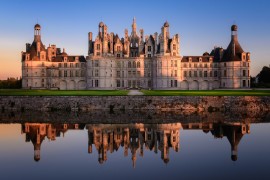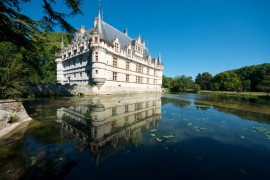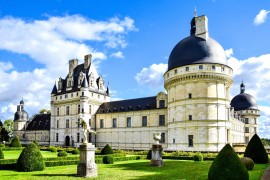Here is a summary of what you will discover about Chenonceau: the history of the Château des Dames, from Diane de Poitiers to Catherine de Médicis, its elegant architecture overlooking the Cher, the galleries, gardens, and iconic spaces, surprising anecdotes about life during the Renaissance, and practical advice for a successful visit.
Visiting the Château de Chenonceau: in a nutshell
Rising above the Cher River, the Château de Chenonceau seems to float between the sky and the river, as if in a dream. It is called the “Château des Dames” because it was women—Catherine Briçonnet, Diane de Poitiers, Catherine de Medici—who gave it its grace, its audacity, and its legend. In its suspended galleries, you can still hear the murmur of balls and royal confidences. Here, the history of France is reflected in the water with gentleness and elegance. Two hours from Paris, Chenonceau fascinates travelers from all over the world with its Renaissance beauty, its gardens designed like paintings, and its unique atmosphere where romanticism and the French art of living come together. When the setting sun illuminates its arches, it is easy to understand why this castle is one of the most admired in France and one of the most photographed in the world.
Chenonceau. Photo selected by Monsieurdefrance.Com: mawgli via Depositphotos.
What to see in Chenonceau: the gardens, the park, and the castle
The Renaissance gardens of Chenonceau Castle. Photo selected by monsieurdefrance: Mor65 via Depositphotos.
The gardens of Chenonceau Castle: a Renaissance masterpiece
When you arrive, a huge driveway leads straight to the castle, which you can see in the distance. But don't take it straight away! Take a detour and follow the map provided at reception: on the right, you will find the donkey park, then a small farm with various animals—a real treat for children. You'll come across swans and ducks, and further on, the flower garden, bursting with variety. Small signs indicate their names, and you'll soon come across a gardener to chat with. A floral workshop displays magnificent bouquets, a must-see for plant lovers. The walk continues towards the farm and the carriage gallery, where horse-drawn carriages, coaches, and old carts are on display—a fascinating testament to the ingenuity of yesteryear.
The castle emerging from the Renaissance gardens. Photo selected by monsieurdefrance.com: Jérôme Prod'homme (c)
The maze and the "false ruins" of Chenonceau
To the left of the main path is a living wicker maze. It is a surprising place where you can happily lose yourself. In its center, a monument adorned with caryatids by Jean Goujon pays homage to the romantic gardens of the 19th century. Pallas and Cybele can be found on one side, Hercules and Apollo on the other. The place is photogenic: don't miss it, even if the castle is already drawing you in.
The monument of the labyrinth. Photo selected by Monsieurdefrance.com: Jérôme Prod'homme (c)
The contemporary gardens of Chenonceau: between art and nature
Before or after visiting the castle, explore the green garden, laid out on the site of Catherine de Medici's former menagerie and aviary. This garden, planted with remarkable trees—holm oak, black locust, blue cedar, catalpa—pays tribute to domesticated nature. Further on, the Russell Page Garden, named after the great British landscape architect who was awarded the Order of the British Empire in 1952, celebrates the dialogue between art and nature. Here you can discover works by François-Xavier Lalanne (1927–2008), an animal sculptor with a unique poetic style.
The Renaissance gardens of Diane de Poitiers and Catherine de Medici
Chenonceau Castle seen from the sky Photo by Antoine2K/Shutterstock
Before you, the castle rises up, half bridge, half palace, offering one of the most famous panoramas of the Loire. On the right, the garden of Catherine de Medici, intimate and flower-filled (roses, lavender, etc.), borders the river where canoes are often seen. On the left, the slightly lower garden of Diane de Poitiers retains its original design. Its terraces, veritable ramparts, protect the estate from flooding by the Cher—a capricious river! The climbing roses are sublime in the summer months.
Visiting Chenonceau Castle: inside the masterpiece
The entrance to Chenonceau Castle as seen from the gardens. Photo selected by monsieurdefrance.com: Milosk50 via depositphotos.
The tour is perfectly organized: just follow the signs, even if you quickly get caught up in the beauty of the place. We start with the oldest part of the house (before the bridge), where we discover the bedrooms, the intimate chapel, the apothecary's room, and the superbly reconstructed kitchens—it's like being in Downton Abbey.
View of the apothecary's room (since Chenonceau was also a convent and the nuns needed to be cared for. The castle was also used as a hospital during World War I. Photo selected by monsieurdefrance.Com: silverbackstock via depositphotos.
Next comes the grand gallery, a long walkway above the water, decorated with paintings and antique objects. The light changes throughout the day, creating a magical impression of floating on the Cher River. After the tour, you can see Madame Dupin's tomb in the forest park before returning to the castle.
The chapel (detail). Photo selected by monsieurdefrance.Com: giuseppemasci.me.com via deposithotels.
Planning your visit to Chenonceau: duration, itinerary, and tips
Allow at least half a day to fully enjoy Chenonceau. Ideally, visit the gardens on the right side on the way in and the left side on the way out, spending at least an hour in each area. Inside, there is a lot of going up and down, but the flow of visitors remains smooth. Even when it's busy, it's always possible to take a beautiful photo without the crowds — well done to the castle team for their exemplary organization. Look at the ceilings, sculptures, and details: they are magnificent and often overlooked by visitors in a hurry. The stairs and fireplaces offer splendid photo angles that are different from the usual shots.
Practical information: access, opening hours, and admission fees for Chenonceau Castle
Don't forget to look at the details. Sculptures are everywhere in Chenonceau, and they are subtle. Photo selected by Monsieurdefrance.com: Jérôme Prod'homme (c)
GPS address: Château de Chenonceau, 37150 Chenonceaux (Indre-et-Loire). The estate is located 210 km from Paris (approximately 2 hours via the A10) and 33 km from Tours (30 minutes).
Getting to Chenonceau
-
By car: Take the A10 highway, exit at Bléré or Amboise, and head towards Chenonceaux.
-
By train: Chenonceaux station, right next to the castle, with connections from Tours and Paris-Austerlitz (journey time approx. 2 hours 30 minutes).
-
By plane: Tours-Val-de-Loire Airport, 30 minutes away.
Rates and schedules
-
Adult admission: approximately $15, brochure included.
-
Online reservations are recommended.
-
Open year-round, with hours varying depending on the season (see: chateau-chenonceau.fr).
Please note that prices are provided for informational purposes only and are not binding on Monsieur de France. Please check the official website.
Chenonceau Castle Photo by proslgn/Shutterstock
Distances from Chenonceau to other Loire Valley castles
Here we are in the heart of the Loire Valley, where France displays all its grace. Each residence tells a royal tale: the refinement of the Château d'Azay-le-Rideau, the grandeur of the Château de Chambord, the beauty of the Château de Chenonceau on the water, and the classic elegance of the Château de Cheverny. These jewels make the Loire Valley a journey through French history and art de vivre.
-
Chambord: 54 km – approximately 1 hour by car
-
Amboise: 7.5 miles – ≈ 15 min
-
Azay-le-Rideau: 52 km – ≈ 40 min
-
Blois: 45 km – ≈ 45 min
-
Cheverny : 60 km – ≈ 1 hr 10 min
-
Villandry: 55 km – approximately 45 minutes
The history of Chenonceau Castle: the castle of the ladies
Before the marvel we see today, there were already several castles in Chenonceau. First, there was a fortified castle designed to control—and tax—traffic on the Cher, the river that flows beneath it. Of these medieval buildings, almost nothing remains, except for the Tour des Marques, a remnant of the old fortified castle.
Restoration of the south facade of Thomas Bohier's castle on the Cher River. Drawing by Félix Roguet (1823–1888).
The origins of Chenonceau: from fortified castle to pleasure palace
It was Thomas Bohier and his wife, Katherine Briçonnet, who turned Chenonceau into a place of leisure. They bought the property in 1514 and began by demolishing the old fortified castle to build a new one on the banks of the Cher River. Katherine Briçonnet was the true architect of the site, managing the estate and the construction work during her husband's long absences, as he was an influential man at the French court. After the couple's death, financial malpractice by Thomas Bohier led to the castle being confiscated from his son, Antoine Bohier, by King Francis I in 1535. The castle then became part of the Crown's estate.
Diane de Poitiers: the king's favorite and builder of the bridge
Henry II, King of France, inherited the castle confiscated by his father Francis I. In 1547, he gave it to the woman of his life: the sublime Diane de Poitiers, his mistress who was twenty years his senior. It was she who had the idea of building a bridge connecting the château to the other bank of the Cher—a visionary idea that would save Chenonceau from destruction during the Revolution: "A bridge is useful," Louise Dupin would later recall.
Probable portrait of Diane de Poitiers by François Clouet (1510–1572).
Diane reigned over the castle and the king's heart for twelve years. But when Henry II died, killed during a tournament on July 10, 1559 (he was struck in the eye by a lance), Catherine de Medici, his wife, took her revenge and banished Diane from court. The favorite had to give up Chenonceau, which she exchanged for Chaumont-sur-Loire.
Catherine de Medici: the queen who covers the bridge of the favorite
After becoming a widow, Catherine de Medici took over Chenonceau in 1559 and set about transforming it. She had the bridge built by Diane covered and gave it its current appearance of a gallery suspended over the Cher River (1576). She also commissioned the creation of new gardens.
Catherine de Medici by François Clouet (after 1559).
A strategic queen, dressed in black, she dominates the court. She relies on her "flying squadron," attractive and intelligent women whom she sends to gather information from influential men. At Chenonceau, politics and intrigue mingle with refinement.
Visitors include Queen Margot, Queen Mary Stuart and Louise de Lorraine, the future "White Queen." These are the heyday of Chenonceau, royal residence and beating heart of female power.
Louise of Lorraine, the White Queen of Chenonceau
It was to Chenonceau that Louise de Lorraine-Vaudémont retired after the assassination of her husband, Henri III, in 1589 by a fanatical monk ironically named "Clément." Deeply in love, she never recovered from her loss. A little princess of Lorraine with no royal destiny, she nevertheless became Queen of France, and Chenonceau her refuge in mourning.
Louise of Lorraine-Vaudémont, Queen of France by Jean Rabel — This image comes from the Gallica online library.
Dressed in white every day—the color of mourning for French queens—, she transformed her room into a somber oratory decorated with tears and bones painted in silver. Her grief left a melancholic mark on the castle. Upon her death, Chenonceau passed successively to the houses of Vendôme and Condé.
Louise Dupin, Madame Pelouze, and the Meniers: Chenonceau through the centuries
Louise Dupin (1706–1799) by Jean Marc Nattier
In 1737, the Duke of Bourbon, who was absent, sold the château to the financier Claude Dupin (1686–1769). His wife, Louise Dupin, turned it into a place of thought and culture. She welcomed Jean-Jacques Rousseau and took an interest in women's rights. She was one of the first French feminists.
During the Revolution, she saved Chenonceau by reminding people that:
“What’s this, citizens! Don’t you know that Chenonceau is a bridge? You only have one bridge between Montrichard and Bléré, and you want to demolish it? You are enemies of the public good!”
Hats off to Madame Dupin!
Later, in 1864, Madame Pelouze undertook an ambitious renovation of the château and organized lavish social receptions there. Her extravagances ruined her financially, and she was forced to sell Chenonceau to Crédit Foncier de France. The estate then passed to the Terry family, originally from Cuba, before being bought by the Menier family, famous chocolate makers.
The Menier family: preserving the castle
Henri Menier (1853–1913) purchased Chenonceau for his beloved wife, Hélène Thyra-Sellières. He died shortly afterwards, and his brother Gaston Menier continued the family business. A patriot, he transformed the gallery into a military hospital during the First World War. His wife, Simonne Menier, cared for the wounded herself. A few years later, the Meniers, who were aviation enthusiasts, welcomed Charles Lindbergh, the first man to fly across the Atlantic. During World War II, the gallery became a secret passageway to the free zone. The castle was damaged by bombing: the stained glass windows of the chapel were destroyed by an American plane, even though they had survived the Revolution.
A poster of the Menier family / Poster publicitaire de 1893, créée par Firmin Bouisset.
Chenonceau still belongs to the Menier family today. Laure Menier, the current owner, continues the lineage of the "Ladies of Chenonceau" and watches over this iconic monument. It is now one of the most visited sites in France, where each visitor crosses both the Cher River and five centuries of history.
FAQ – Chenonceau Castle
The gardens / Chenonceau Castle Photo by Viacheslav Lopatin/Shutterstock
How long does it take to visit the Château de Chenonceau?
Allow at least half a day to enjoy this Renaissance jewel of the Loire Valley: two hours for the gardens and two hours for the interior.
Why is it called “the Ladies’ Castle”?
Because it was powerful women who shaped Chenonceau: Katherine Briçonnet, Diane de Poitiers, Catherine de Medici, and Louise Dupin — each adding her mark to this masterpiece of French history.
Can we see the grand gallery above the river?
Yes. The grand gallery spans the Cher River, creating one of the most iconic views in France — a true castle bridge over the water.
Can we visit the gardens without entering the castle?
Yes. The ticket includes access to the gardens of Chenonceau: the Renaissance garden of Diane de Poitiers, the floral garden of Catherine de Medici, and the maze, kitchen garden, and green spaces.
Does the castle still belong to the government?
No. It is still privately owned by the Menier family, famous for their chocolate, who have carefully maintained it for generations.
Is it necessary to book in advance?
Yes, especially in summer and during public holidays. Online booking guarantees easier access to one of the most visited castles in France.
Chenonceau Castle Photo by Felix Lipov/Shutterstock.com
Is the castle accessible by train?
Yes. The Chenonceaux train station is located only a few meters from the entrance — an easy trip from Tours or Paris by train.
Did Chenonceau serve during the wars?
Yes. The Château de Chenonceau was a military hospital during World War I, and later a crossing point to the free zone in World War II.
Where exactly is Chenonceau located?
In the Loire Valley, in the town of Chenonceaux (Indre-et-Loire, France), about 210 km from Paris and 30 minutes from Tours.
What is the best spot for photographing the castle?
From the Renaissance gardens or the banks of the Cher River, where the castle’s arches are reflected perfectly in the water.
